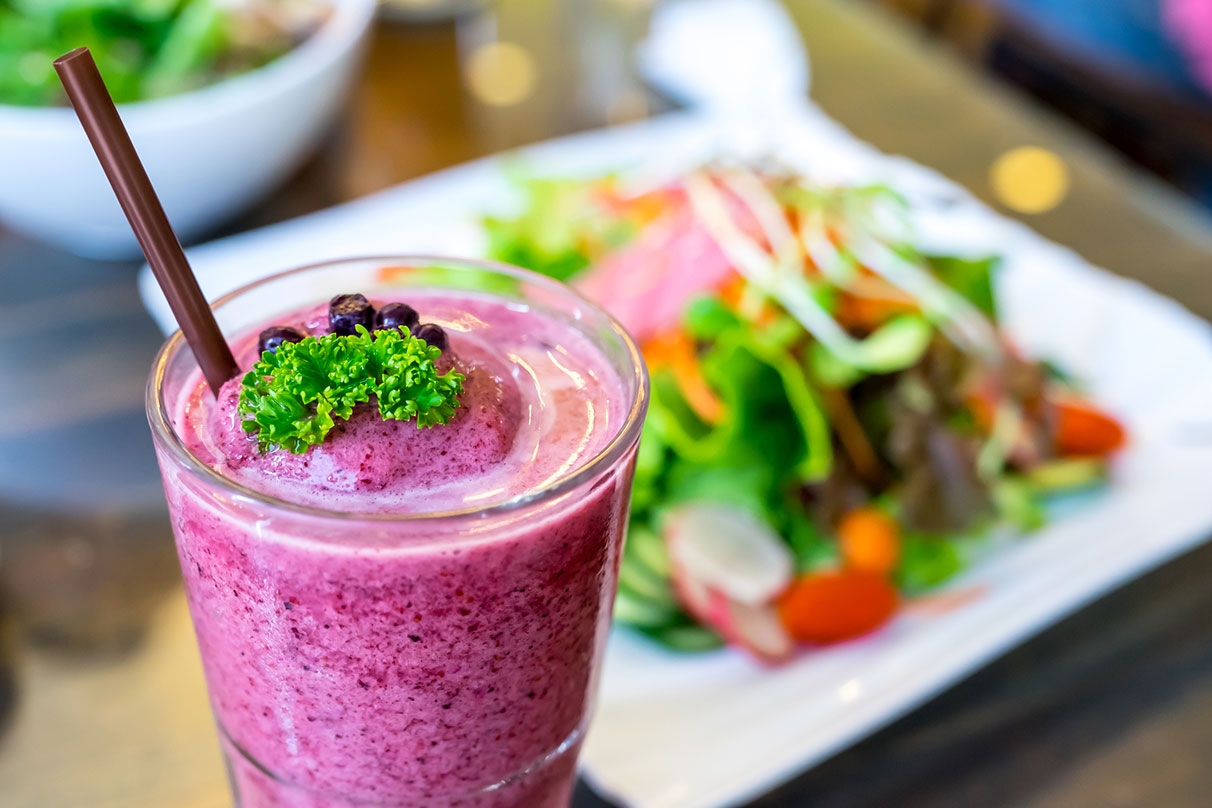Five Common Eating Pitfalls and How To Avoid Them
January 12, 2018 | Food Lion


Many people resolve to eat healthier as part of the new year, but what does eating healthier really mean?
Sometimes our “healthy" changes are not exactly healthy. Here are some common pitfalls and how to avoid them.
1. Smoothies are always healthy.
Oftentimes when people start a healthy eating initiative, it involves a daily smoothie ritual. Smoothies are, in fact, a wonderful way to pack important nutrients in a tasty and quick meal. Here are some things to look out for to make sure your healthy smoothie isn't really a glorified dessert:
- Make sure the fruit you use is unsweetened. Fruit is sweet by itself, so you don't need the added refined sugar which adds unneeded calories. Whether ordering your smoothie out or making it at home, be sure to select unsweetened frozen fruits. Check the nutritional labels to make sure fruit is the only ingredient. Instead of fruit juice, opt for the whole fruit with the skin on to benefit from all the nutrients and fiber it has to offer. To sweeten your smoothie, try adding one or two pitted dates. Dates are naturally sweet fresh fruits that come from the date palm tree. They contain loads of fiber as well as nutritious vitamins and minerals.
- Go beyond just fruit. Smoothies are also a great opportunity to add greens without having to taste them. Throw in a handful of baby spinach or kale into your smoothies. Smoothies are also a great opportunity to add healthy plantbased proteins and healthy fats such as chia seeds, flax seeds, avocado, raw buckwheat groats, nut or seed butters, plant-based yogurts, hemp seeds or bee pollen. You won't taste or feel these items, making smoothies the perfect way to sneak these beneficial foods into your diet.
2. Salads are the healthiest item on the menu.
When eating out, many people go straight to the salad portion of the menu. This is not always your healthiest option, as salads can be loaded with even more calories, sodium and fat than other entrees.
- Dressings are often the culprit. Oftentimes, restaurant salads are doused in dressings that are full of sodium, saturated fat and cholesterol. Even fat-free or reduced-fat salad dressings aren't always necessarily low in calories, as they could still be high in sugar. Ask for your dressing on the side so you can control how much you use. You can also enhance flavor and moisture by adding lemon or lime juice. Fresh garlic, onions or herbs make great flavor enhancers, too.
- Go for dark leafy greens. Salads are a wonderful way to get in your fruits and vegetables. Opt for dark leafy greens such as calcium-rich kale or spinach, which provides an excellent source of vitamin C and K, folate and iron. Although not dark, romaine is a better option than iceberg as it has seven times more vitamin A and C.
- Watch out for the add-ons. Avoid things like candied nuts, dried fruit, high fat cheese and anything breaded or crispy, or at the very least ask for them on the side. Instead, fill your salad with fresh fruit, avocados, hemp seeds, beans, chickpeas, lentils, nuts and seeds. Add colorful toppings. The nutrients in fruits and vegetables vary with type and color, so taste the rainbow and add red radishes, orange shredded carrots, yellow bell peppers, green cucumbers, blueberries and purple beets.
3. Once you find a healthy snack, eat as much as you want. Take nuts for example.
It is true that they provide healthy fats and nutrients and are a great snacking option, but they also can be high in calories and sodium. Many people will eat an entire bag of nuts in one sitting. Depending on your goals, you may want to portion-control your snacks. This concept of proper portion sizes and moderation can also work when dining out, where restaurants tend to supersize things. You can share and have the server divide the meal onto two plates. Or, to avoid temptation, you can order once and enjoy twice if you have the server package up half your meal before you eat.
4. Vegetables are always healthy.
Be careful about how much sodium and saturated fat could be in your vegetables. Many restaurants serve them fried, drowning in butter and/or covered in salt. For healthy flavor, you can ask for your vegetables steamed or sautéed with a little olive oil and onions or garlic. At home, you can roast and flavor them with your favorite fresh or dried herbs.
5. Never eat dessert.
Total deprivation is never long-term. Instead, eat small portions of your favorite indulgences every now and then and incorporate mostly healthy desserts into your routine. Stick with desserts with unrefined sugars and low saturated fat. Natural sweeteners such as maple syrup and dates can add sweetness to your desserts without all the refined sugars. Always keep fresh fruit cut up in the refrigerator for a sweet-tooth moment. A cold juicy mango or fresh pineapple can be incredibly satisfying.






Create Your Display Name